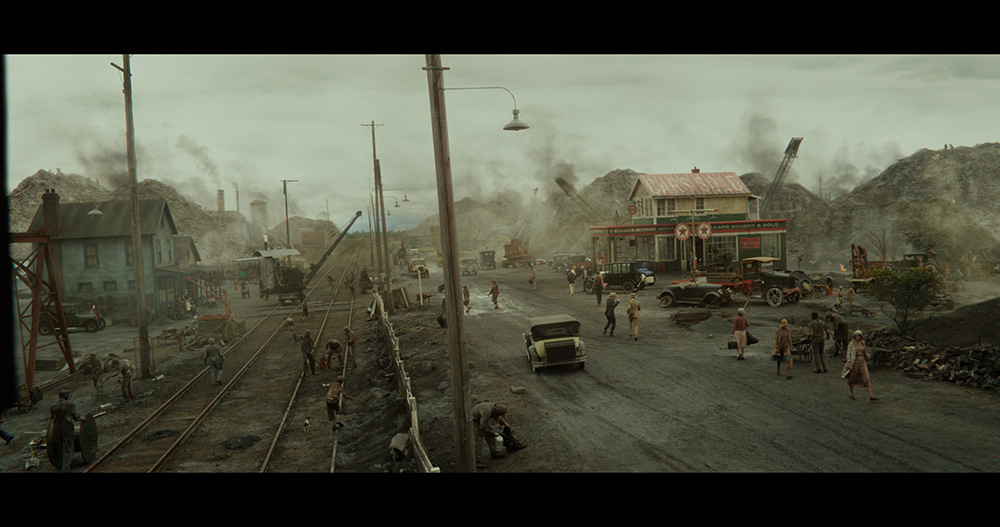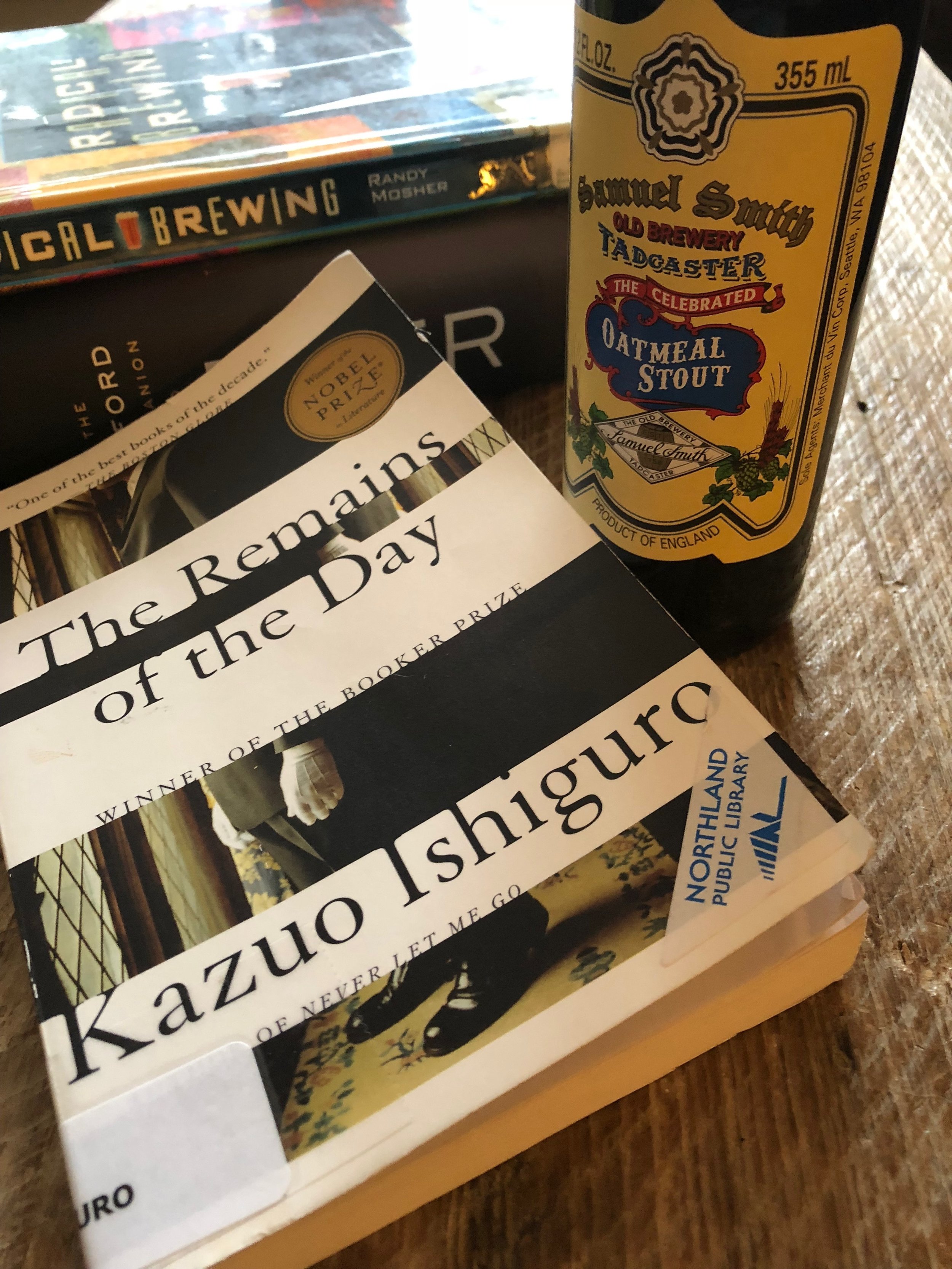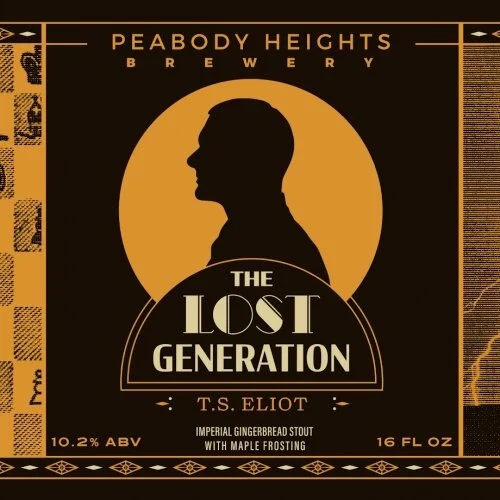The Great Gatsby, The Waste Land, and Cinderlands Beer Company
There’s a new brewery in my neighborhood: Cinderlands. For the first couple of weeks after it opened, I couldn’t keep its name straight. “Cinderella?” I’d think. “Cinders Land?”
After three visits to this great new brewery, I’ve finally got its name down. And every time I think of it, T.S. Eliot’s The Waste Land comes to mind, along with the book that Eliot’s poem influenced, F. Scott Fitzgerald’s The Great Gatsby.
The Books
If you read Gatsby in high school, you likely remember the valley of ashes. Maybe you wrote a paper on what the valley of ashes says about industrialization or the post-war class divide. Maybe you analyzed the looming pair of eyes that float above the valley on a giant billboard. If so, this passage will ring a bell:
About half way between West Egg and New York the motor road hastily joins the railroad and runs beside it for a quarter of a mile, so as to shrink away from a certain desolate area of land. This is a valley of ashes—a fantastic farm where ashes grow like wheat into ridges and hills and grotesque gardens; where ashes take the forms of houses and chimneys and rising smoke and, finally, with a transcendent effort, of men who move dimly and already crumbling through the powdery air. Occasionally a line of gray cars crawls along an invisible track, gives out a ghastly creak, and comes to rest, and immediately the ash-gray men swarm up with leaden spades and stir up an impenetrable cloud, which screens their obscure operations from your sight. But above the gray land and the spasms of bleak dust which drift endlessly over it, you perceive, after a moment, the eyes of Doctor T. J. Eckleburg. The eyes of Doctor T. J. Eckleburg are blue and gigantic — their irises are one yard high. They look out of no face, but, instead, from a pair of enormous yellow spectacles which pass over a nonexistent nose. (26)
Those haunting eyes of Eckleburg’s appear on the cover of this edition:
Parts of Eliot’s poem appeared in print two years before Fitzgerald published Gatsby, and Fitzgerald was a big fan of Eliot’s modernist break with the past. Fitzgerald’s “certain desolate area of land echoes The Waste Land, in which the speaker promises, “I will show you fear in a handful of dust.”
I can’t find any press on why the owners of Cinderlands chose to call their venture "Cinderlands," but I wonder if it doesn’t have something to do with Pittsburgh’s industrial history: a land of steel and smoke. That’s what the name evokes to me, anyhow - a land of cinders, the embers of an industrial past - much like the barren wastelands that Eliot and Fitzgerald describe. The loveliness of the word “cinder,” though, as well as its fairy-tale allusion to Cinderella, make this history a lovely one, something to be mythologized rather than lamented. There’s a similar beauty in Eliot and Fitzgerald’s descriptions of industrialization.
Similarly, my new hometown, Pittsburgh, is building something beautiful on its industrial history. Google, Uber, UPMC, and CMU’s robotics program contribute to Pittsburgh's survival; to my eye, Allegheny County's fifty-seven breweries are also an important part of Pittsburgh's attraction. That’s more breweries in my county now than there were in the entire country forty years ago. (For the record, in 1978, there were forty-two breweries in all of America. What?!)
The Beers
Cinderlands is part of Pittsburgh's craft-beer blossoming, and boy are they doing good work. I visited three new (to me) breweries a few weekends ago, and Cinderlands definitely stood out among them. Its beer list is short: a smart move, I think, when you’re just starting out and when your brewery is in the basement of an old row house, in what used to be a garage.
Head brewer Paul Schneider brewing at Cinderlands.
What Cinderlands does with beer, it does so well. (The food is still a little hit-or-miss for now. I’m sure they’ll make it more consistent soon, as Cinderlands just opened in December.) The beer is just as elegant as the decor is:
My first time there, I ordered 5-ounce tasters of the Cobra (kölsch), Cobra Tonic (turmeric kölsch), Land Ethic (witbier), Sand County (coffee witbier), and Littlefoot (session IPA). I was most impressed by the base beers: the kölsch and witbier. I pulled up my BJCP app description of kölsch and witbier to study as I sipped, and both beers adhere to their ideals. The kölsch: clear gold in the glass, biscuit with just a bit of honey, slightly floral. The witbier: straw-colored with a pale haze that is just so lovely in the glass, a little hint of coriander and orange, tart on the tongue.
Then take those well-honed base beers and play with them a little bit. Add Intelligentsia coffee to the witbier to make Sand County, and you get toffee overtones that blend deliciously with the spice of the witbier’s Belgian yeast. Add turmeric tea to the kölsch and it pops with ginger, a pop that plays off the brightness of a kölsch in a way that really makes it sparkle.
The next time I was there, I tried the Midnight Ramble (blackberry milk stout), Check the Gate (NE IPA), and Room Tone (NE IPA). My brother will testify that I cannot find a lactose beer that I have the least fondness for, but this milk stout was subtle, its sweetness pairing perfectly with french toast. The head manager, Matt, was nice enough to show us the brewing facility downstairs, where I got excited about a sour NE IPA that I saw fermenting.
This past weekend, I got to enjoy that same sour IPA, dubbed Stellar Peak. I also had a taster of the Stickeen, a DIPA. The Stickeen makes me miss the west-coast: it uses those Simcoe hops that I love so much I once told a friend he should name his daughter “Simcoe” (hi, Seth and Vida!). I also love that there are oats in a whole lot of the grain bills at Cinderlands; it gives them a slight velvety smoothness that I really enjoy.
If you know the origin of Cinderlands’ name, let me know. In the meantime, I’m going to enjoy its evocation of some of my favorite literature: fairy-tales, The Waste Land, and the valley of ashes from The Great Gatsby.
Cinderlands does great cocktails, too. Try the virgin rosemary greyhound (a steal at just $4).

















